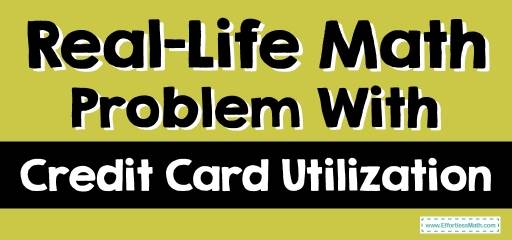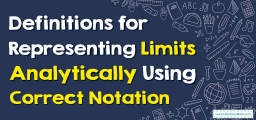Real-Life Math Problem With Credit Card Utilization

Our high school math is not just for fun and games, as people think it has any real-world applicability. However, one fantastic example of a real-life application is the credit card utilization rate.
In the real world, if you want to keep a positive credit score, you need a low credit utilization percentage.
If you are looking to understand the credit card utilization rate in-depth, you are in the right place. Here is what you need to know about it.
What Is Credit Card Utilization Rate?
Your credit card utilization rate is the percentage of the total credit you are using from your card. It is an essential factor that will affect your credit score. So, you need to learn how to maintain a healthy ratio to keep a good credit score.
For example, the general rule of thumb is to have a credit utilization rate of less than 30%. The idea is to keep it as low as possible, so your credit score remains stellar. However, it doesn’t mean you should keep it at 0%, as that is not possible at all.
Real-Life Math Problem With Credit Card Utilization
Here is a real-life math problem that will help you understand the credit card utilization rate even better:
Example: Suppose you have two credit cards. The first one has a limit of $17,500, and the second has a limit of $24,600. Now, you have a home renovation expense coming up that will cost you $20,000, and your option is to split this expense between the two credit cards you own.
What amount will you use from each card to achieve the lowest credit card utilization rate?
Answer: Total credit limit = 24,600 + 17,500 = 42,100.
To calculate your utilization rate, you need to divide the expense by the total credit limit. 20,000 divided by 42,100 = 47.5%.
So, ideally, you should use 47.5% of each card to get the lowest credit card utilization ratio. That means you can use $8,313.5 from your card with a $17,500 limit and $11,686.4 from your card with a $24,600 limit.
Another simple example is that if your expenses are $4,000 and your credit card limit is $20,000, your utilization rate will be 20%.
Factors That Might Affect Your Credit Utilization Rate
The three main factors that affect your credit utilization rate include:
- The balance
- The credit limit on your account
- The opening or closing of accounts
If you close your credit card, your total available limit will decrease, which will reduce your credit utilization rate, leading to a dip in your credit score. On the other hand, if you open a new credit card and maintain the same level of spending, your credit limit will increase, and it will boost your credit utilization rate.
Final Words
That was your complete guide to the credit card utilization rate and a real-life math problem to help you explain. Now that you have all the information, you can maintain an ideal rate for a better credit score.
Related to This Article
More math articles
- The Best Calculator for PSAT 8/9 Math Test
- 6th Grade ACT Aspire Math FREE Sample Practice Questions
- How to Write Equation of Parallel and Perpendicular Lines?
- 6th Grade MAAP Math Worksheets: FREE & Printable
- Using Number Line to Graph Percentages
- Top 10 Free Websites for ATI TEAS 7 Math Preparation
- How to Change Base Formula for Logarithms?
- 5 Best Headsets for Online Math Classes in 2026
- Perimeter: Locate the Absent Side Lengths
- How to Solve Multi-Step Word Problems



























What people say about "Real-Life Math Problem With Credit Card Utilization - Effortless Math: We Help Students Learn to LOVE Mathematics"?
No one replied yet.